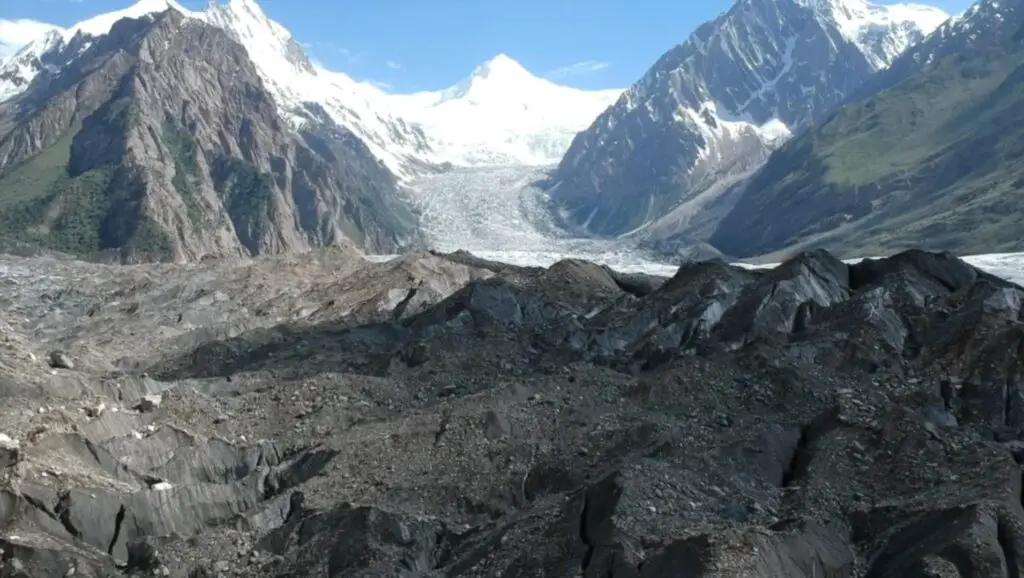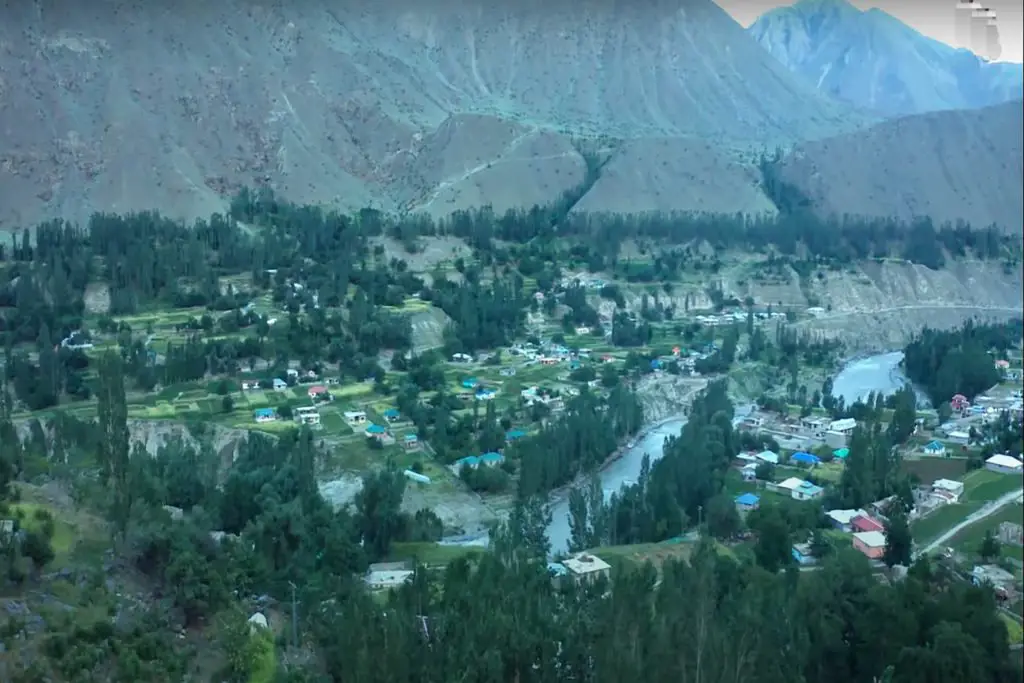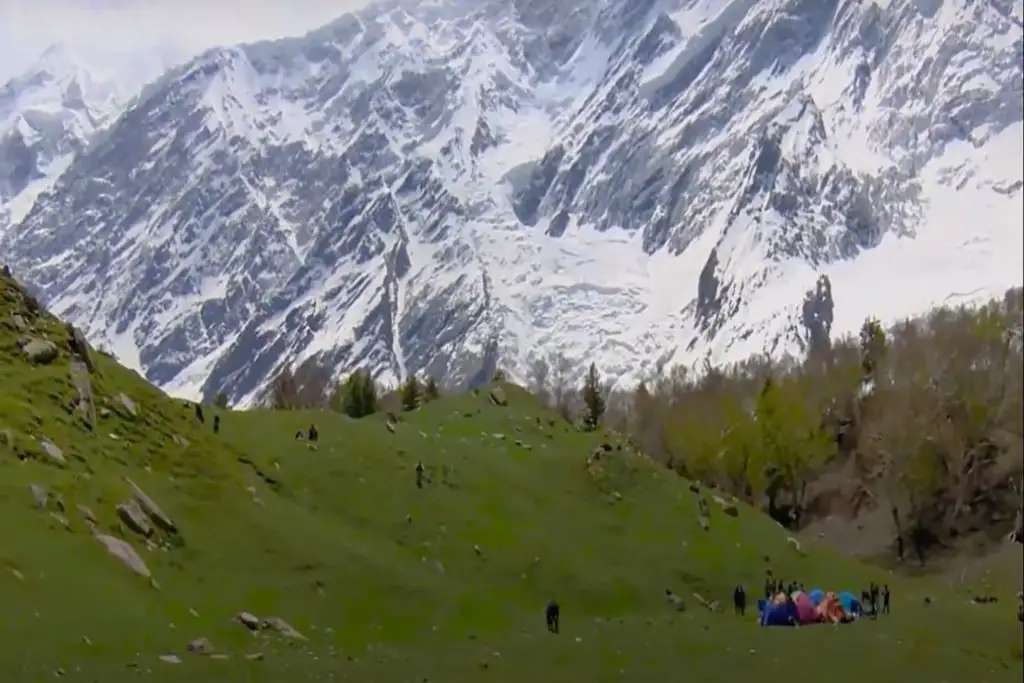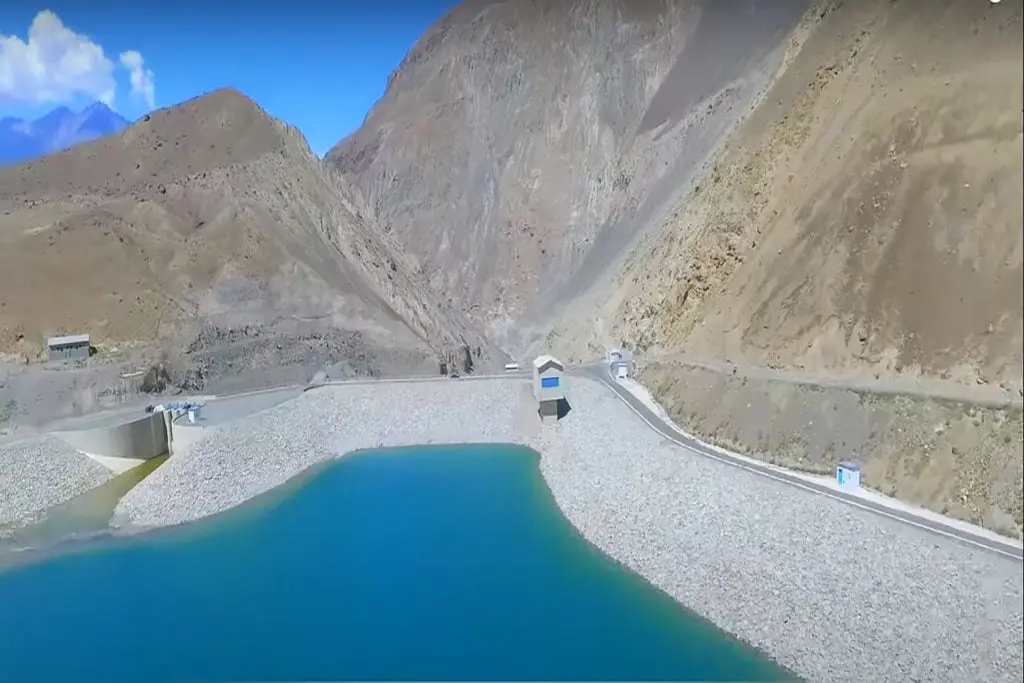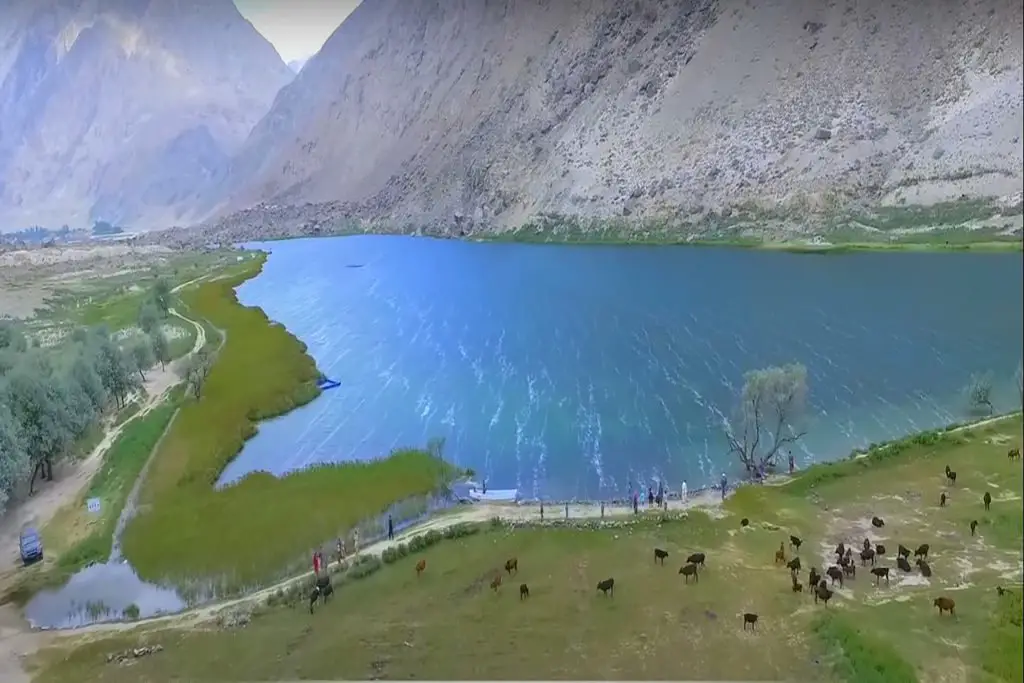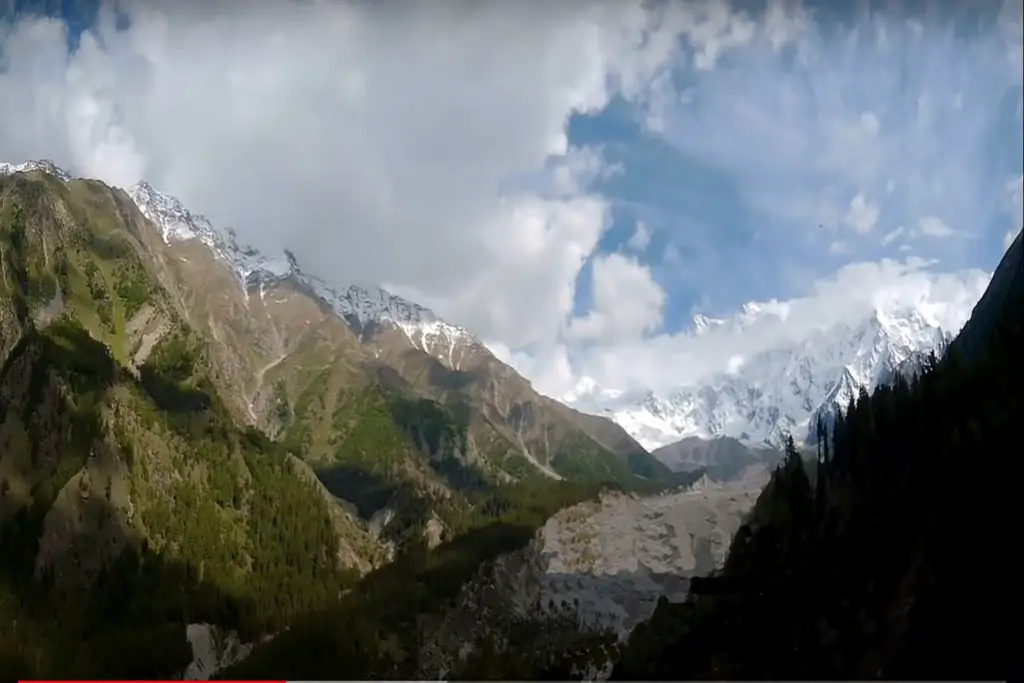The Hispar Glacier is a 49 km (30 mi) long glacier in the Karakoram Mountains of Gilgit-Baltistan, Pakistan, which meets the 67 km (42 mi) long Biafo Glacier at the Hispar La Pass at an elevation of 5,128 m (16,824 ft) to create the longest glacier system in the world outside the polar regions.
Hispar Valley assortment of glaciers, passes and snow lake, is the last station in Nagar Valley, Gilgit Baltistan. At a distance of 28 km from Nagar Khas and 60 km from Skardu Valley on the other side, it is the last valley on the Biafo glacier trek and one of the amazing natural attractions. Hispar valley is also accessible from Hunza, which is at a distance of 43 km.
Location of Hispar Glacier
The Hispar Glacier is a magnificent glacier located in the Karakoram mountain range of Pakistan. It is approximately 49 kilometers long and is one of the longest glaciers outside of the polar regions. The Hispar Glacier is a popular destination for trekkers and mountaineers, who come to marvel at its beauty and challenge themselves with its difficult terrain.
The Hispar Glacier is located in the heart of the Karakoram mountain range, which is home to some of the tallest peaks in the world, including K2, the second-tallest mountain on Earth. The glacier is fed by several smaller glaciers and snowfields, and it flows down from an altitude of over 5,000 meters.
For true adventure lovers and trekkers, Hispar Valley is the best place to visit for an exciting trek to Hispar Glacier and Snow Lake.
Length & Altitude of Hispar Glacier
Hispar Glacier is a 49 km long glacier in the Karakoram Mountains that meets the Biafo Glacier at a pass known as Hispar La.
In the heart of the Panmah Muztagh Mountains, the Biafo Glacier and the Hispar Glacier spread in opposite directions in the Hispar Pass, forming a 100 km river of ice. It is the largest glacier system apart from those in the polar regions. The glaciated highway connecting the two ancient mountain kingdoms is located at an altitude of 5,128 meters above sea level.
This 100 km ice highway connects two ancient mountain kingdoms, Nagar in the west and Baltistan in the east. The extreme steepness of the slopes and the strenuous nature of boulder hopping on the side moraines and slopes make the upper half of this route the most difficult part of the Biafo – Hispar traverse.
Only the Hispar La day includes walking on the Hispar Glacier. Crossing the four main tributary glaciers from the north is the most challenging and the potentially high nullah crossings can be dangerous. The views of the 7,800-meter (25,600 ft) peaks and the snow-capped cliffs and mountains on the south side of the glacier are particularly impressive.
Access to Hispar Valley and Hispar Glacier
The valley is located in Hispar Muztagh and is accessible by a dangerous and rough road. Snow Lake and Hispar La Trek on the right bank of the Biafo Glacier starts from Skardu to Askole. The 63 km long Biafo Glacier south of the Baltoro Glacier leads to the Hispar Glacier.
The road that starts from Ganish village and continues through the Hispar valley is a 41 km long, narrow and unguarded road. The road remains snow-covered for eight months of the year due to avalanches and landslides, which are very common. The steep road can only be traversed in a jeep driven by skilled local drivers who know the terrain.
It is the extreme steepness of the slopes, the strenuous hike over the huge boulders, the four main tributary glaciers and the high nullahs that make the crossing on the Biafo-Hispar glaciers the most difficult. Once on board, the views of snow-capped mountains and peaks are extremely impressive.
One of the most striking features of the Hispar Glacier is its rugged terrain. The glacier is marked by deep crevasses, icefalls, and seracs, which make it a challenging environment for even the most experienced mountaineers. Despite these challenges, the glacier is a popular destination for trekkers and climbers, who come from all over the world to test their skills on its slopes.
The Hispar Glacier is also an important source of water for the region. It feeds the Hunza River, which is a vital source of water for the people who live in the area. In recent years, however, the glacier has begun to retreat at an alarming rate. Climate change is thought to be the main cause of this retreat, as rising temperatures have caused the glacier to melt at an accelerated rate.
Main Attractions of Hispar Glacier, Snow Lake
Lakes are often called “mirrors of mountains”, but there is a lake that does not reflect anything. Where the Hispar and Biafo glaciers converge, the only snow lake is the Hispar Snow Lake at an altitude of 16,000 feet.
Despite the challenges posed by climate change, the Hispar Glacier remains a popular destination for adventurers and nature lovers. Its stunning natural beauty and challenging terrain make it a unique and unforgettable experience for those who visit it. However, it is important to remember that we must take steps to protect the glacier and the fragile ecosystem it supports so that future generations can continue to enjoy its wonders.

